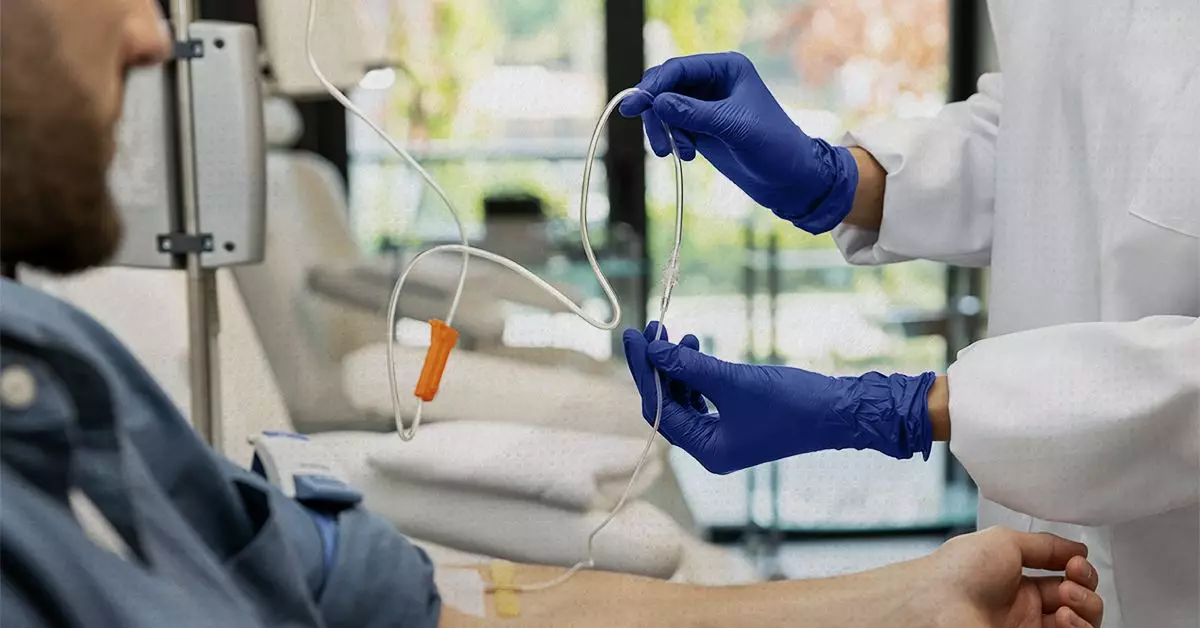Lymphoma is a complex and diverse category of cancers that affect the lymphatic system, which plays a crucial role in the body’s immune response. With varying subtypes and individual patient responses, the treatment options for lymphoma are equally multifaceted. Here, we unpack the most prevalent treatments available, delving into their mechanisms, applications, and implications for patient care.
The journey through lymphoma treatment begins with accurate diagnosis and classification of the specific subtype, such as Hodgkin lymphoma or non-Hodgkin lymphoma. This classification is critical as it influences the choice of therapy. Additionally, certain cases may not require immediate intervention. Doctors may opt for a technique known as “watchful waiting,” where patients are closely monitored without immediate treatment until symptoms necessitate a change in approach. This strategy is particularly applicable in cases of slow-growing lymphomas, allowing healthcare providers to balance treatment timing with any potential benefits.
Chemotherapy and Its Complexities
Chemotherapy remains one of the cornerstone treatments for lymphoma, particularly for non-Hodgkin lymphoma (NHL). The process generally involves administering potent medication that targets rapidly dividing cancer cells. Chemotherapy drugs can be delivered orally or through intravenous infusion, allowing for flexibility based on individual patient needs. While effective, the side effects of chemotherapy can be daunting, leading to significant patient discomfort. Common adverse effects include nausea, fatigue, and a compromised immune system, which can heighten the risk of infections.
Different treatment regimens may combine chemotherapy agents with immunosuppressive medications, like corticosteroids, intensifying the attack on cancer cells. The delicate balance between dosage and patient tolerance necessitates close monitoring and adjustments from healthcare professionals.
Radiation therapy serves as another vital treatment modality, employing high-energy beams to systematically eradicate lymphoma cells. This approach can be utilized either as a standalone treatment, particularly in early-stage lymphomas, or as an adjunct to chemotherapy prior to procedures such as stem cell transplants. The non-invasive nature of external beam radiation is a key advantage; however, patients may experience side effects such as skin irritations, fatigue, and digestive issues, complicating their overall health.
Each treatment course typically spans multiple weeks, with sessions scheduled several times a week, maximizing the radiation’s efficacy while striving to minimize adverse impacts. As with other therapies, the goal is to enhance the patient’s quality of life while effectively combating the cancer.
Immunotherapy: Harnessing the Immune System
One of the more revolutionary advancements in the treatment of lymphoma is immunotherapy, which enhances the body’s innate immune response against cancer. Monoclonal antibodies, for instance, are engineered to target specific proteins on lymphoma cells, facilitating direct destruction or marking them for immune system recognition. Rituximab, a leading example, is predominantly utilized in treating non-Hodgkin lymphoma and can be effective both as a single agent and in combination with chemotherapy.
Emerging treatments like chimeric antigen receptor (CAR) T-cell therapy exemplify the cutting-edge nature of immunotherapy. This innovative procedure involves extracting a patient’s T cells, genetically modifying them to better target lymphoma cells, and reintroducing them into the body. Given its complexity and associated risks, CAR T-cell therapy is typically reserved for cases where conventional treatments have failed.
Targeted therapy marks another stride in personalized medicine, utilizing drugs to hone in on specific molecular anomalies present in cancer cells. These therapies differ fundamentally from traditional chemotherapy, focusing on inhibiting unique pathways that foster cancer growth and survival. With numerous targeted therapies available, patients may experience varied side effects, but the specificity of treatment can often equate to a more favorable tolerance profile.
Agents such as BTK inhibitors and PI3K inhibitors are examples of this targeted approach; they work to disrupt the signaling pathways essential for the survival of lymphoma cells. This route represents a hopeful direction for individuals with specific genetic profiles associated with their lymphoma, highlighting the importance of genetic testing in tailoring treatment plans.
Bone Marrow Transplant: A Last Resort
In some advanced cases of lymphoma, a bone marrow or stem cell transplant may be considered. This significant procedure requires a preparatory phase of intensive chemotherapy to eliminate existing cancer cells, followed by the reintroduction of healthy stem cells either from the patient or a suitable donor. While a transplant can potentially offer a curative pathway, the candidacy for such a procedure is carefully evaluated, particularly for older patients or those with comorbidities.
Looking Ahead: Treatment Outlook and Support
While lymphoma treatments have significantly evolved, the disease’s impact on patients can be profound, even post-treatment. Prognosis hinges on various factors including lymphoma subtype, stage at diagnosis, and individual health considerations. The five-year survival rates vary significantly between different forms of lymphoma, but continual advancements in treatment herald a promising future for those diagnosed.
Importantly, a patient’s journey doesn’t end with the conclusion of treatment. Emotional and psychological support is crucial, and many patients may benefit from counseling services to navigate the complexities of living with and beyond lymphoma. With ongoing research and developments in therapeutic approaches, the outlook for lymphoma patients remains optimistic, fostering hope for continued improvements in survival rates and quality of life.

